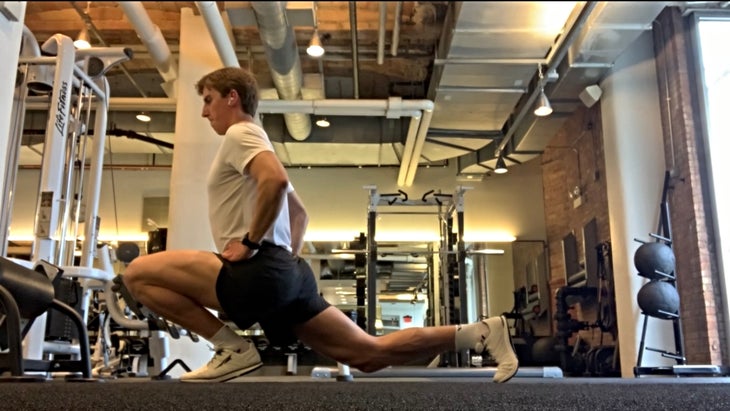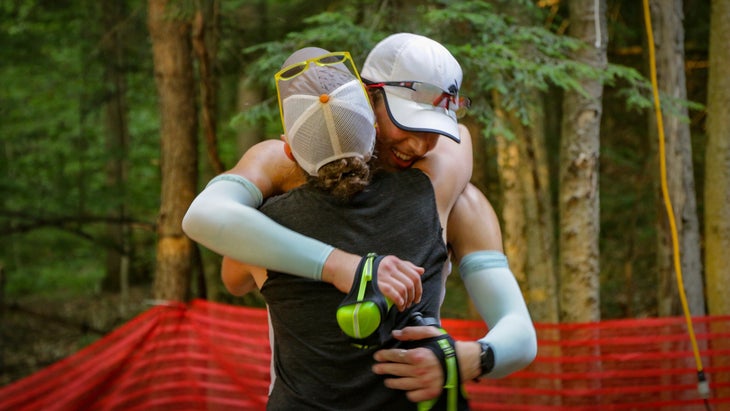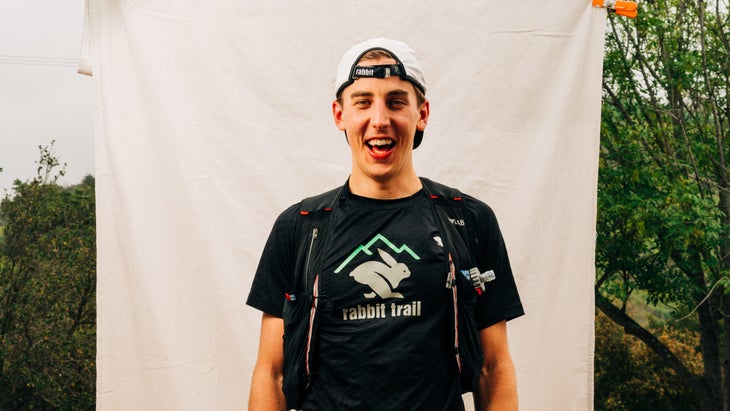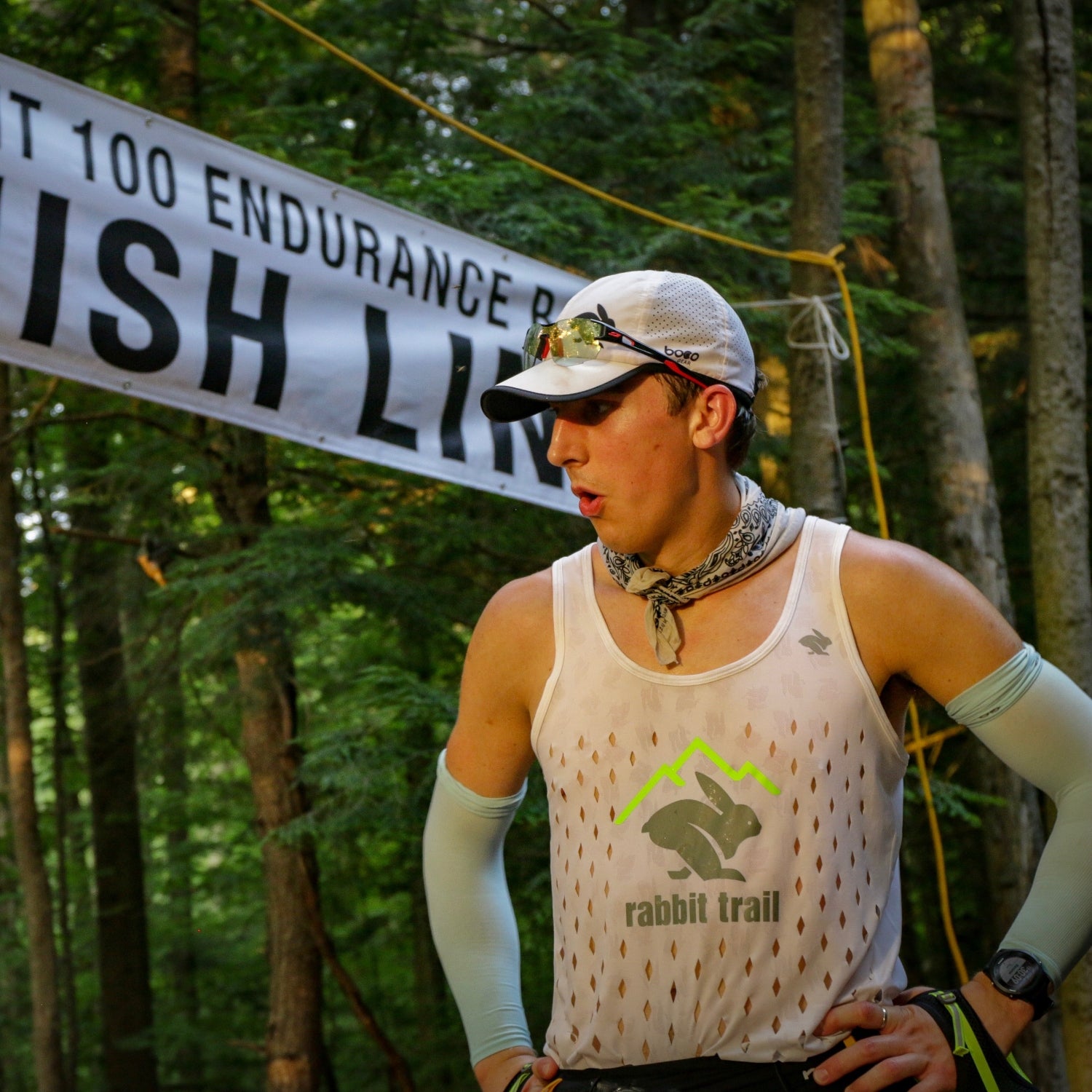As an endurance athlete, I spent the better part of my twenties training for and running ultramarathons. My body was resilient, productively absorbing 60- to 100-mile training weeks and races just as long, and I thought that would continue indefinitely.
Then, over the course of nine months, I developed intermittent but often excruciating sciatica, nerve pain that originates in the lower back and radiates down the leg, and eventually, as a result of changing my running gait to compensate for this pain, a torn hip labrum. I expected rest—the do-nothing, on-the-couch type rest—to eventually heal me, but the pain persisted. I saw massage therapists, chiropractors, acupuncturists, bone and joint specialists, and nerve doctors. No one had a clear answer and no treatment worked.
It was at this vulnerable moment, in 2020, that I discovered the Knees Over Toes Guy. Ben Patrick, a then 30-year-old based in Clearwater, Florida, posted videos of himself on Instagram performing scroll-stopping feats of circus athleticism without any apparent discomfort: springing from a stationary deep squat up to dunk a basketball; where, from a standing position, he drops his knees out forward to touch the ground. These exercises put a remarkable amount of pressure on very vulnerable joints.
In nearly every video, Patrick shares that he has had three knee surgeries, and doctors told him he would never be able to squat or play basketball without pain again. But through an unconventional—and some might say dangerous—strength training protocol, Patrick was not only able to effectively eliminate his pain, but he says he was able to increase his speed and vertical jump to well beyond his youthful PRs. His message was that anyone can achieve that same ability and resilience. But in order to do so, you’d have to forget most everything you’ve been told about strength training.
The internet is rife with fitness hucksters and overpriced, overcomplicated training plans, but Patrick seemed different. As I read the hundreds of comments under his videos, I was struck by how universally positive everyone was, with sincere-seeming testimonials for his online program, gratitude for introducing them to these unconventional movements, and encouragement towards users who shared their stories of chronic pain. I was also impressed by the numerous physical therapists . Desperate to regain autonomy over my athleticism, I decided to give his exercises a try.
Over the last four years, Patrick has exploded in popularity, going from a trainer and gym owner to an online fitness mega-personality with 2.4 million Instagram followers. Patrick, who declined to speak with us for this article, has shared his origin story on many podcasts, including the mega-popular Joe Rogan Experience, which has 14.5 million followers on Spotify and 17.6 million on YouTube.
As an obsessive youth basketball player, his passion for the sport and penchant for grueling drills (he would frequently perform 1,000 daily layups) led to painful, fragile knees. His teammates nicknamed him Old Man. After Patrick underwent those three knee surgeries—the first while he was still a teenager—he discovered the late, famed Canadian strength coach Charles Poliquin, who preached a style of strength training where each rep is taken to its stretched end range. The priority is not just the amount of weight you can lift, but the body’s ability to move into deeper positions while doing so. (Poliquin was noted for his Seussian soundbite: “Strength is gained in the range it is trained.”)
Patrick adopted Poliquin’s training techniques and not only eliminated his chronic knee pain, he says, but began to redevelop his athleticism. At age 23, he was offered a full-ride scholarship to play D1 basketball at Eastern Florida State College. Now, as a trainer, he proselytizes this training philosophy through his unsubtly named app and online coaching business, Athletic Truth Group.
Part of Patrick’s success can be attributed to his origin story and his social media savvy: his videos are short, attention grabbing, and feature practical training advice. With the bracing sincerity of a youth camp counselor, he talks directly to the camera, appearing trustworthy and capable. But the other part is that this style of training—which Poliquin pioneered and Patrick champions—is, by historic standards, radical.
Bodywork Newsletter
Want more of ąú˛úłÔąĎşÚÁĎ’s Health stories?If you have ever spent time in a weight room, you’ve likely been warned that your knees should never go past your toes in a squat. Instead, you should push your butt backwards and stop when the upper and lower leg form a 90-degree angle. Failing to do so will put too much pressure on your knee and cause injury.
This is only half true. Squatting with your knees over your toes does put pressure on the joint, but that pressure may actually help you avoid injury.

“Tendons, cartilage, ligaments—all those things will toughen up to load,” says Erik Meira, a physical therapist and rehab specialist based in Portland, Oregon, who works with NBA and NFL players. For most athletes, especially those in endurance sports, injuries occur in the connective tissues of the joints. Tendons, while quite different in composition than muscles, still operate under the same principle: to get them stronger, you must use them in a mildly stressful manner, then back off and let them recover.
“Knees over toes is something that has been vilified for a long time as causing pain to the front of the knee,” says Meira. “The reality is it will cause pain if you’re not conditioned to take that kind of load. But the best way to condition yourself to that kind of load is to get used to positions like that.”
Patrick has taken this philosophy—that bending your knees under progressive load will make them healthy and strong—and applied it to other vulnerable parts of the body including the ankles, hips, lower back, shoulders, and elbows. In a way, Patrick’s protocol could be seen as a gym routine structured entirely around proactive physical therapy: he identifies problem areas and develops strength and range of motion in the local musculature and connective tissue.
It is a tremendously appealing proposition to many endurance athletes, who are traditionally averse to the gym. Here is a style of strength training that doesn’t prioritize muscle mass, is singularly focused on avoiding pain, and will allow you to fully express yourself physically outside of the gym.
In 2020, I was one of many impressionable scrollers transfixed by Patrick and his message. Without much to lose, I dedicated myself to 16 weeks of his program through the app. The first cycle, a full-body general protocol called Zero, was easy. I did repetitive, progressive bodyweight exercises—some familiar, some novel—to strengthen mind-muscle connections and expose my joints to new movement patterns. Then, four weeks later, came Dense, where you take these same and other similar exercises, add weight, and perform many sets to condition your joints through repetition under manageable load. Four weeks after that, I moved on to a back-specific training program.
The most significant movement for me in this block was the , which you perform on a forward-angled, hip-high bench that allows you to hinge forward from the hips and directly strengthen the lower back muscles. This was terrifying, as I thought putting my injured back in that exposed position would only hurt it further. But this is precisely what this program is trying to teach: safely training in a vulnerable position creates resilience in that position.
https://www.instagram.com/p/CjTz7R8NkJx/
“The most important part of rehabilitation is graded exposure,” says Mike Istraetel, the popular online fitness commentator who holds a doctorate in exercise science. “You want a little bit of irritation, then back off and heal up… The biggest mistake people make in a gym is assuming a degree of fragility to their body.”
And while Patrick emphasizes the importance of developing strength in tendons themselves, there’s also another factor at work. “Tendons take up to nine months, if not more, of consistently loading to heal and grow stronger,” says Matt Klein, a rehabilitation and movement science professor at George Fox University. “But patients can have an acute decrease in pain [when they first start training the injured joint] and that’s not because the tendon has changed. That’s because their perception of pain—a fear response—has changed.”
Meira explains that fear activates our nervous system and sends us into a dysfunctional “protective mode.” “We see this a lot with low back pain,” Meira says. “An individual starts to fear taking load and their back gets weaker. Then they ł¦˛ą˛Ô’t take more load, then they fear it more, and they end up in a downward spiral where their back is made out of glass.”
With this mindset, I performed small reps at first, barely leaning forward a few inches, then the next time I went a little deeper, and so on until months later, I was doing 20 full range reps. Eventually I started holding a weight to my chest as I leaned forward, taxing my low back further. And an amazing thing happened: my sciatica went away. Gone, vanished. The insidious nerve pain that for years—literally years—I tried to roll, massage, stretch, and rest away, finally disappeared. All it needed, it turned out, was to get stronger.
“The biggest mistake I see with athletes is resting for wellness,” says Meira. “Let’s say the front of my knee gets sensitive when I run. I think I’m going to stop putting any load on it and let that heal. Then once it heals I’ll go back to what I’m doing. But when I’m resting it, the front of that knee isn’t getting any stimulus, so it’s not learning to take load. It’s being de-conditioned to load. Being overprotective is often what gives us issues.” This is ultimately Patrick’s message: to heal your body, you must use your body.
“Ten years ago we still had a postural fear model: you should not put your knees over your toes because that’s going to cause you knee pain; you should not slouch because that’s going to cause you neck pain,” says Klein. “The current evidence suggests that the perfect posture is the one you’re in for the least amount of time. Move. People are going to be slumped forward and extended and everything in between. Your body is meant to move in these ways. If your body is having trouble in a position, train in that position more.”
As I progressed through the program, it became evident that there are only about two dozen total exercises that Patrick repeatedly prescribes. If you’ve never performed these movements, the app—which coaches you through proper form—is invaluable. The back extension machine was revelatory for me and got me out of pain and back to the sport I love.
But as I rebuilt my running body and tried to progress deeper into his program, I ran up against his one-size-fits-most approach, an unfortunate and necessary limitation of mass-marketed fitness programs. For instance, deadlifts, which Ben prescribes, still hurt my back no matter how gentle or light I went.
No program will serve as the answer to everything, says Klein. “I think [Patrick] is helping a lot of people,” he says. “But I also think it can hurt a lot of people.” Klein points out that athletes should only try these training protocols after taking the time to pursue an accurate diagnosis with doctors and physical therapists—to ensure they’re treating the right thing.
After two years, I stopped following Patrick’s program through his app, but his philosophies have fundamentally changed how I think about exercise. Now, four years since I began his protocol, running is still my priority, but I only run four days a week instead of six. Strength training two to three times a week is non-negotiable. Each session is full-body and joint-focused, and at least half of the exercises I perform are ones I learned through his program. I haven’t gone a week without a back extension in two years. But the most important thing the Knees Over Toes Guy has taught me is as simple and radical as this: to keep athletically progressing and doing what you love into your thirties and beyond, you have to get strong. Spending time in the gym is a real-time fight against aging.
Despite the reduction in my running volume, I’m still getting faster, winning races, and setting PRs. But the thing I’m most proud of: I’m doing it all without pain.

The Knees Over Toes Philosophy
Strength Train
If you are injury-prone, aging, or looking to maximize your body’s potential, you MUST strength train. Full stop. Two or three times a week is ideal, but once a week is better than nothing. Perhaps this is obvious, but it bears repeating to strength-shy endurance athletes.
Measurably Strengthen Vulnerable Areas
Identify the muscles that support your body’s most vulnerable areas and train them unyieldingly. For ankles, this means targeting your calves (encompassing both the soleus and gastrocnemius) and tibialis anterior, the oft-ignored muscle on the front of the lower leg. For knees, it’s mainly quads and hamstrings. And for hips and back, well, it’s your hip flexors and back muscles. Do this in a manner that you can measure, such as weight lifted or reps completed, and work to improve those metrics. This is in contrast to many other runners’ strength programs, where you’ll likely find complex kettlebell swinging workouts, yogic core stability routines, or resistance band “activation” drills. There’s nothing inherently bad about these exercises, but they fail to give you a way to measure their progress. They are also inefficient at genuinely strengthening the muscles and tendons that do the most for you.
Build Balance
Nearly everyone has practiced squatting. But when was the last time you did the opposite–that is, lifted weight up off the ground with your legs instead of lowering weight toward the ground? Over time, certain exercises have become popular while their counterbalancing movements have not. Most athletes train their calves but not their tibialis anterior; their squat but not their hip flexors; their abs but not their lower back. To be a high-performing pain-free athlete, you must train both sides of the body, and both sides of any joint.
Regress
If pain pops up, as it is bound to, do not stop training that area. Instead, regress the movement (e.g. less weight, smaller range of motion, and/or fewer reps) to the point where you feel no pain. But do not cease to use that area of the body entirely. Pain is bad and you should never work through pain—but motion is lotion.
Length Through Strength
Static stretching is not the panacea for health that it was once thought to be. However, the mobility (i.e. range of motion) of your joints and muscles is incredibly important and is correlated with healthier tissue. So how do we reconcile those two truths? We work to lengthen while strengthening. This means that for every exercise, you should be feeling a stretch at the top or bottom of the movement, and you should perform every exercise with the greatest bend in the targeted joint that you can achieve without pain. (Often, this means starting by lifting lighter weights.)



